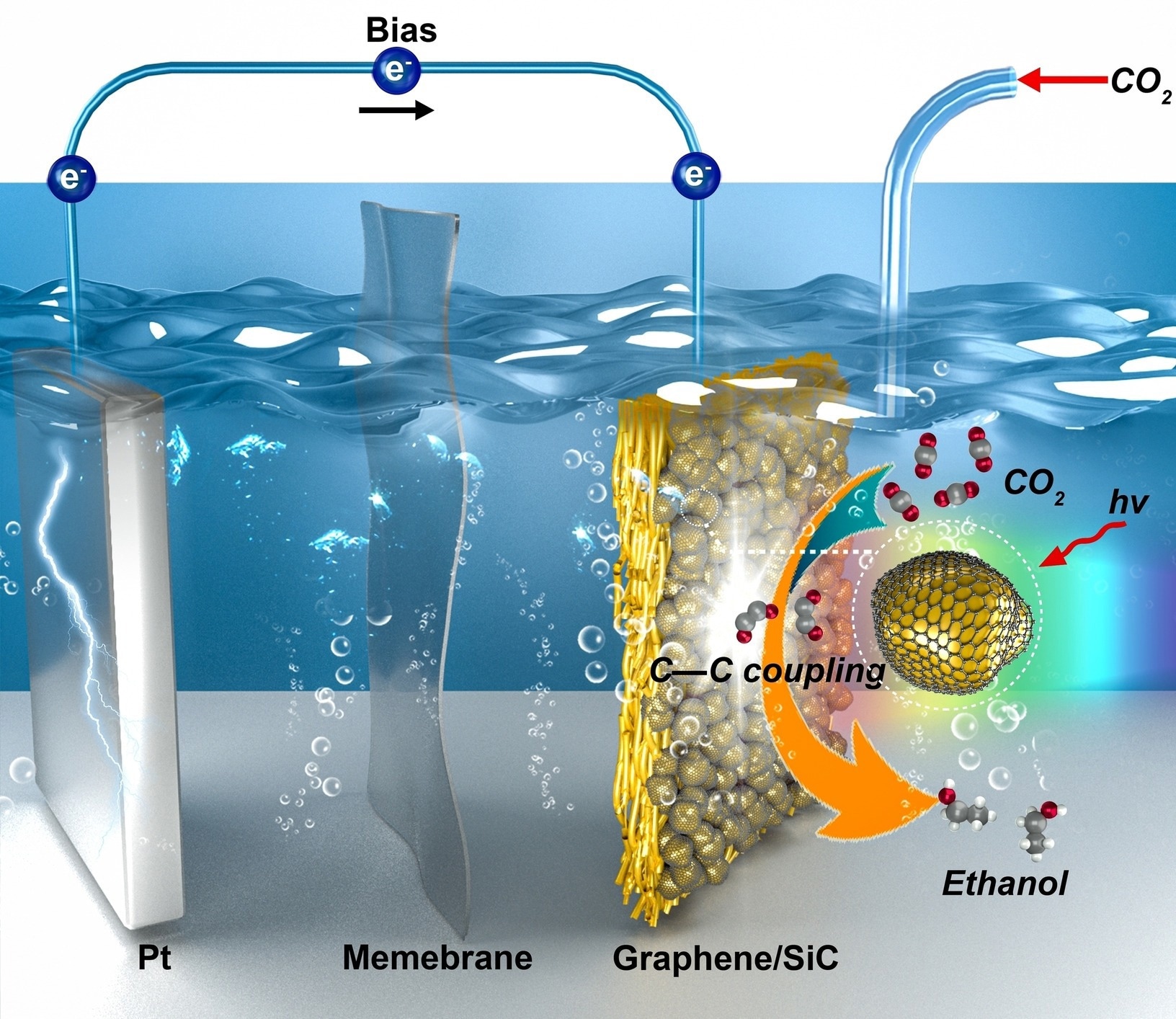A viable method for achieving solar energy storage and a negative carbon cycle is artificial photosynthesis (AP), which uses sunlight to convert carbon dioxide (CO2) into useful chemicals and fuels.
 Schematic diagram for highly selective photoelectroreduction of carbon dioxide over graphene/silicon carbide composites. Image Credit: Shanghai Advanced Research Institute
Schematic diagram for highly selective photoelectroreduction of carbon dioxide over graphene/silicon carbide composites. Image Credit: Shanghai Advanced Research Institute
However, artificial photosynthesis is quite complex and involves numerous steps. Moreover, it is difficult to selectively synthesize target compounds with C–C bonds as several AP intermediates can provide thermodynamically favorable C1 products.
Graphene/silicon carbide (SiC) catalysts have recently been created by a research team led by Prof. Wei Chen and Prof. Wei Wei from the Shanghai Advanced Research Institute (SARI) of the Chinese Academy of Sciences for efficient CO2 photoelectroreduction to ethanol (C2H5OH).
Angewandte Chemie International Edition published the findings on February 14th, 2023.
The suggested composite catalyst, which consists of a few-layer graphene overlayer, an interfacial layer (IL), and a SiC substrate, can assist in achieving precise control of the active intermediates for C–C coupling.
An ideal IL structure makes it simple to transmit photogenerated electrons from the SiC substrate to the active sites on the graphene overlayer. Due to their strong adsorption at the reaction’s active sites and the high electron density of the graphene surface, reaction intermediates can then be effectively created and maintained.
The researchers discovered that CH3OH production was reduced significantly in favor of C–C coupling. Under simulated solar irradiation with a modest bias (–50 mV bias vs. Ag/AgCl) and ambient conditions, C2H5OH was exclusively produced with a selectivity of >99% and a CO2 conversion rate of 17.1mmol gcat–1h–1.
Therefore, the optimal catalyst’s photoelectrocatalytic performance in creating C2 products from CO2 was at least two orders of magnitude greater than that of the most advanced AP catalysts.
Journal Reference:
Feng, G., et al. (2023) Highly Selective Photoelectroreduction of Carbon Dioxide to Ethanol over Graphene/Silicon Carbide Composites. Angewandte Chemie International Edition. doi:10.1002/anie.202218664.